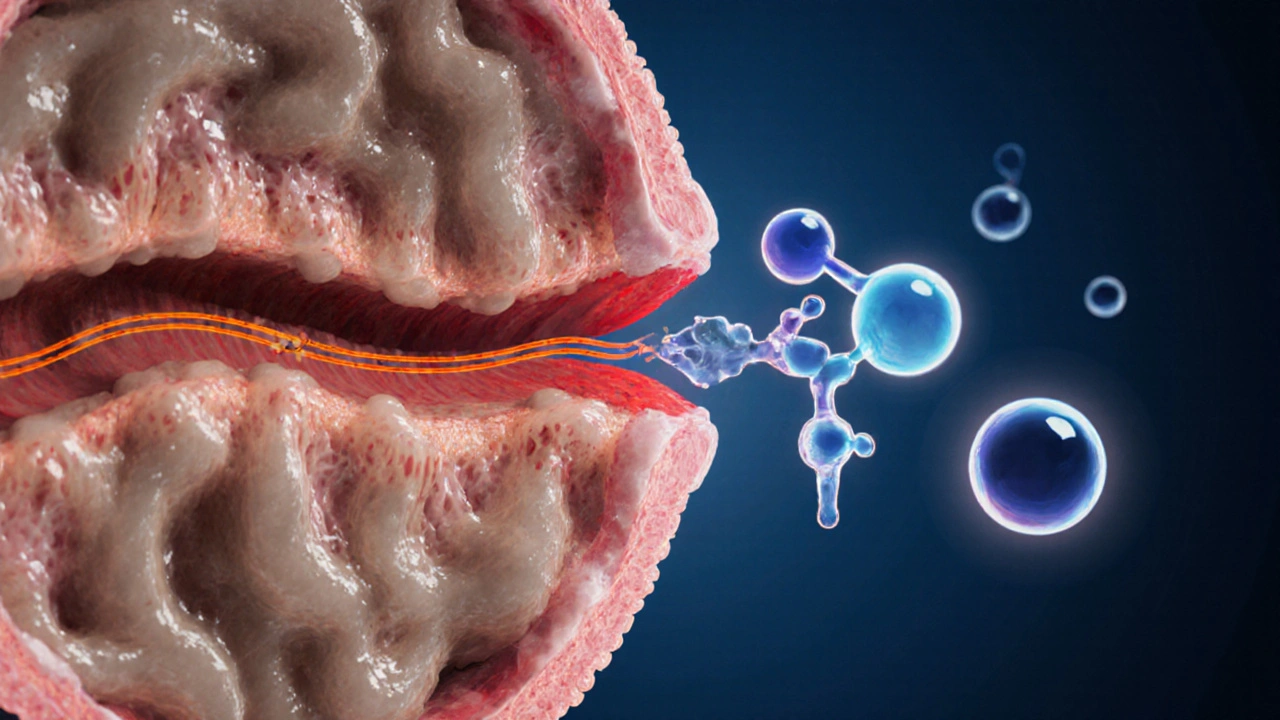N-acetylcysteine: Benefits, Uses, and Safety
When dealing with N-acetylcysteine, a medication and dietary supplement that delivers cysteine to boost glutathione production. Also known as NAC, it acts as a powerful antioxidant and a mucus‑thinning agent. N-acetylcysteine is prescribed for liver protection, respiratory conditions, and as an antidote for certain poisonings, making it a versatile tool in both clinical and everyday health settings.
Key related concepts
One of the main reasons NAC is so useful is its link to antioxidants, substances that neutralize free radicals and support cellular health. By feeding the body cysteine, NAC fuels the synthesis of glutathione, the master antioxidant that detoxifies harmful compounds in the liver and cells. This relationship means that taking NAC can raise glutathione levels, which in turn helps protect the liver from oxidative stress and supports immune function. Another pivotal role is as a mucolytic, an agent that breaks down thick mucus, making it easier to clear from the airways. In chronic bronchitis, COPD, or acute respiratory infections, the mucolytic action of NAC reduces coughing and improves breathing by thinning the mucus gel. The dual antioxidant‑mucolytic profile makes NAC a go‑to option for people looking to support lung health while also safeguarding their liver. Lastly, NAC is the standard treatment for acetaminophen overdose, a medical emergency where high doses of the pain reliever deplete glutathione and cause liver injury. Prompt administration of NAC replenishes glutathione, prevents cellular damage, and dramatically improves outcomes. Understanding this emergency use highlights why NAC is stocked in many emergency rooms and why awareness of proper dosing can be life‑saving.
Beyond these core functions, NAC shows promise in mental‑health research, eye‑health studies, and even as a support for fertility, but the evidence varies. When you consider adding NAC to your routine, pay attention to dosage (often 600‑1,200 mg daily for supplement use, higher doses under medical supervision for overdose), timing with meals, and possible interactions with nitroglycerin or certain antibiotics. Below you’ll find a curated list of articles that dive deeper into each of these angles—whether you need practical dosing tips, safety warnings, or insights into the latest clinical findings. Explore the collection to get a clear picture of how NAC can fit into your health plan.

Carbocisteine vs Other Mucolytics: Detailed Comparison and Alternatives
A thorough comparison of Carbocisteine with Ambroxol, N‑acetylcysteine, bromhexine and guaifenesin, covering mechanisms, dosage, side effects, cost and when each is best to use.
- Health and Wellness (56)
- Drug Information (38)
- Pharmacy Information (19)
- Medical Conditions (16)
- Supplements (4)
- Travel Health (2)
- Diabetes (2)
- Mental Health (2)
- Heart Health (1)
- Fertility (1)
-
Lupus Arthritis and Hydroxychloroquine: How This Drug Reduces Joint Inflammation and Prevents Flares
1 Dec 2025 -
How Velpatasvir is Revolutionizing the Treatment of Hepatitis C
29 Apr 2023 -
Celecoxib for tendonitis: Is it effective?
27 Apr 2023 -
Boost Your Health with Sweet Gale: The Must-Have Dietary Supplement for 2021
31 Jul 2023 -
The Role of Diet and Nutrition in Managing Sickle Cell Anemia
12 May 2023

14.10.25
Alistair Mukondiwa
19